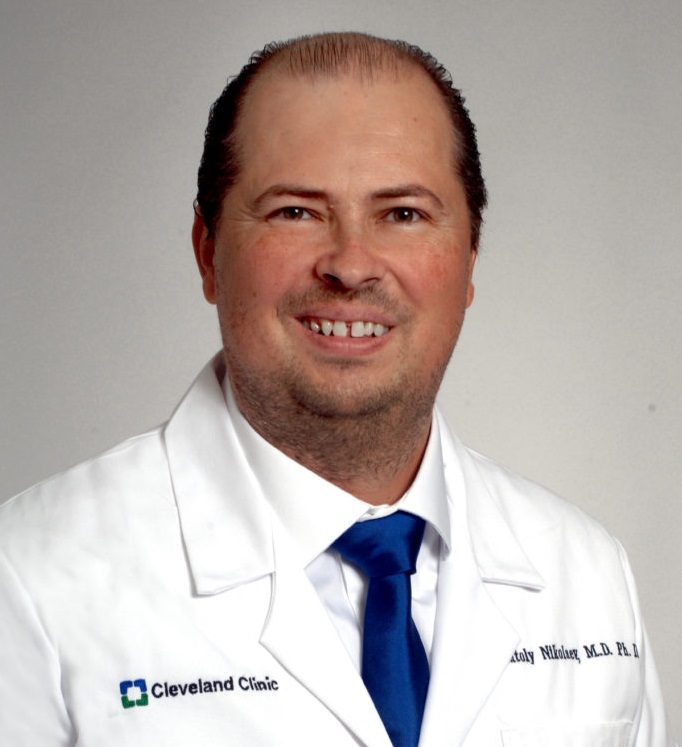Paying It Forward

Carmel Whitman and her brother lost their father to Alzheimer’s after a 20-year battle. “For all those years, we watched him disappear inch by inch,” she remembers. Eight years later, they lost their mother to glioblastoma in only 18 weeks.
Glioblastoma, an aggressive type of brain or spinal cord cancer, accounts for nearly half of all cancerous brain tumors in adults. Every year, more than 12,000 people are diagnosed with glioblastoma in the U.S. On average, they survive only nine months from the time of diagnosis. In recent years, the death of public figures like Senators John McCain and Ted Kennedy from glioblastoma has shone a spotlight on the disease’s lethal record.
For Carmel’s mother, Carmel “Big Carm” Maitland, a glioblastoma diagnosis was the fatal third act of a decade-long war against cancer. After the death of her husband, Mike, she was diagnosed with colon cancer that had already metastasized beyond her bowel wall by the time it was detected through a colonoscopy. When the cancer returned several years later, she underwent several more rounds of chemotherapy and had three-fifths of her liver removed.
Big Carm faced cancer with the same combination of steel and spunk that characterized her first 60 years of life. Born to a large family in Detroit, she was a resourceful, independent woman with a talent for sewing her own clothes and a keen mind for business.
In the 1950s, she and Mike moved to Encino, California to propel his career in the record industry forward. He achieved phenomenal success as an executive at Capitol Records, where he signed a young Elton John, and later at Warner Brothers and MCA Records.
Despite the family’s success, Big Carm was more apt to save and invest than to spend. She made an exception for land, purchasing a 330-acre ranch in Ventura so her family could ride horses and run a small vineyard when they weren’t at home in Encino. Every summer, Carmel recalls, family friends from Encino would descend upon the ranch for elaborate themed costume parties. Throughout her life, Big Carm’s boundless energy and creativity lifted the spirits of those around her.
Each phase of her mother’s diagnosis was devastating, but the third and final diagnosis wrenched Carmel’s world apart.
“We came home from a trip, and my mother was limping,” Carmel remembers. “She brushed it off as arthritis and returned to playing bridge, but the cards would just fall out of her hands.” When the doctor diagnosed her with glioblastoma, he made it clear that radiation was the only option to stall an inevitable end.
Big Carm quickly began radiation in hopes that the treatment could shrink her tumor to under two centimeters, which could qualify her for laser knife surgery to remove it altogether and prolong her life. Sadly, all the radiation achieved was to keep the tumor at two centimeters.
While battling colon and liver cancer, Big Carm “never really complained or wondered why this had happened to her and not someone else,” her daughter remembers. The only concession she would ever make to cancer was to take more frequent naps after she fell asleep behind the wheel one day.
Glioblastoma was different. It ravaged her tiny frame more quickly than anyone expected, causing severe impairment on the left side of her body. She moved in with her daughter and her family, who ate meals at her bedside and hired personal care assistants to make her final days more comfortable. “The hardest part was realizing her mind wasn’t the same,” says Carmel. "It all happened so quickly.” After an 18-week battle, Big Carm passed away in late 1996 at the age of 74.
Before her death, she and her daughter had discussed the possibility of creating a family foundation to support research into glioblastoma, Alzheimer’s, and other diseases that family members had experienced over the years. In early 1997, the Carmel M. and John G. Whitman Foundation was created to bring this vision to fruition.
After her mother’s death, Carmel asked her oncology doctor where the most promising glioblastoma research in the world was being conducted. He investigated and came back with a definitive answer: Cleveland Clinic. That was good enough for Carmel and her husband, who have donated to glioblastoma research at the Cleveland Clinic since 1997.
“When my mother was diagnosed with glioblastoma, it was a death sentence. As soon as you find out about it, it’s too late,” says Carmel. “Our hope is to support research that results in earlier diagnosis and better treatment for people with this terrible disease.”
In the past several years, Cleveland Clinic researchers have made significant strides in developing novel therapies for glioblastoma, including Surgically Targeted Radiation Therapy (STaRT), personalized drugs, and vaccine-based approaches to strengthening the immune system. “It’s amazing to think we can be a part of breakthroughs for patients like my mother,” says Carmel.
Big Carm had always embraced the concept of paying it forward, Carmel reflects. She remembers a time when a boyfriend was struggling to put himself through law school, so he asked Big Carm for a loan. After he passed the California bar exam, he took her out to lunch and handed her a check to begin repaying the loan. Big Carm handed it right back, told him his debt was forgiven, and asked him to do the same for someone else in the future.
“That’s a pretty good example of how to live your life,” says Carmel. “My mother always paid it forward. Through our giving, we are striving to do the same.”
Florida Researcher Targets Head and Neck Cancers

Physician-scientist Anatoly Nikolaev, MD, PhD, is on a mission to improve outcomes for patients with head and neck cancer and other malignances by understanding the molecular mechanisms behind cancer treatment resistance and developing new, more effective therapies.
As a board-certified radiation oncologist with Cleveland Clinic Florida, Dr. Nikolaev specializes in head and neck cancer and central nervous system disease sites. In addition to caring for patients at Cleveland Clinic Florida’s Maroone Cancer Center in Weston, he is engaged in leading-edge research at the Port St. Lucie-based Florida Research and Innovation Center (FRIC) and the Florida arm of Cleveland Clinic’s Center for Immunotherapy and Precision Immuno-Oncology (CITI).
Types and prevalence of head and neck cancer
Head and neck cancers typically begin in the squamous cells that line the surfaces of the mouth, throat (pharynx), and voice box (larynx). They are referred to as head and neck squamous cell carcinomas (HNSCC) and are the sixth most common cancer worldwide.
Approximately 100,000 Americans are diagnosed each year with HNSCC, of which there are two main groups. Human papillomavirus-associated head and neck cancer, or HPV-positive HNSCC, is the more common form, and cases are on the rise. The second type is HPV-negative HNSCC, which is strongly linked with tobacco and alcohol exposure and accounts for 30-40% of cases.
“Unfortunately, patients with HPV-negative head and neck cancer have significantly worse outcomes, with a survival rate of less than 40%,” says Dr. Nikolaev, noting studies have demonstrated the relative treatment resistance of HPV-negative head and neck cancer. “And while HPV-positive malignancies often show a better response to chemo-radiation, distant metastases sometimes occur that are more challenging to treat.”
A mission decades in the making
Dr. Nikolaev’s lab is focused on developing novel therapeutic agents to treat both forms of head and neck cancer. At the center of his research is the tumor suppressor protein p53 (TP53). Known as the “guardian of the human genome,” the p53 gene codes for a protein responsible for keeping the human genome stable and counteracting genetic mutations. It blocks cancers from developing by identifying DNA damage and triggering DNA repair or cell death.
“TP53 mutations are present in more than half of human tumors, including head and neck cancer and certain brain cancers, and have been linked to poor response to conventional therapy and reduced survival,” explains Dr. Nikolaev. He first began researching the mechanism of TP53 while working on his PhD thesis in cancer biology at Columbia University in New York City.
After completing a post-doctoral fellowship at Stanford University and researching targeted cancer therapeutics as a principal investigator with biotech giant Genentech, Dr. Nikolaev earned his medical degree at Florida Atlantic University Charles E. Schmidt College of Medicine in Boca Raton. He then completed his radiation oncology residency at the University of Alabama Hospital, where he was awarded a pilot grant to continue his research into TP53.
Building research momentum
Today he is carrying on that work to identify the key molecular and cellular pathways involved in local tumor development and metastatic tumor progression that contribute to resistance to radiation, chemotherapy and immunotherapy. “We are also using AI-driven computational approaches to identify novel therapeutic agents that can make cancer cells with TP53 mutations more sensitive to therapies,” he adds.
Since joining the Florida Research and Innovation Center in August 2021, Dr. Nikolaev and Cleveland Clinic have filed for patents on drug compounds now under investigation in pre-clinical trials. He is collaborating with Brian Burkey, MD, MEd, Chair of the Department of Otolaryngology-Head and Neck Surgery at Cleveland Clinic Indian River Hospital, and other Cleveland Clinic researchers in Florida and Ohio to map out future research components.
Philanthropic support accelerates research
As a nonprofit organization, Cleveland Clinic relies on philanthropy to serve as a crucial link between current research success and future medical breakthroughs. Dr. Nikolaev’s lab has a number of funding needs as they work to develop novel therapeutics and progress them from the lab to bedside care.
- Dr. Nikolaev’s research entails identifying biomarkers for head and neck squamous cell carcinoma and will require creating a Head & Neck Cancer Tissue Biorepository and a “bedside to bench” tissue procurement process.
- The Drug Discovery Program, which is working to identify and develop high potency drug candidates, needs funding for drug synthesis at FDA-compliant manufacturing facilities and to carry out pre-clinical studies in head and neck cancer.
- In addition, Dr. Nikolaev is directing research into radio-sensitizing agents to improve clinical outcomes for diffuse intrinsic pontine glioma (DIPG), a devastating pediatric brainstem malignancy with mutated TP53 involvement. Radiation is the first-line treatment for DIPG, which has an overall survival rate of less than one year. Funding is required to develop pre-clinical research models.
How You Can Help
Philanthropic support is essential to Cleveland Clinic’s research mission. Your gift to support Dr. Nikolaev’s research into cancer treatment resistance and new therapies creates opportunities to improve care and the lives of patients everywhere. Please make a gift today.

